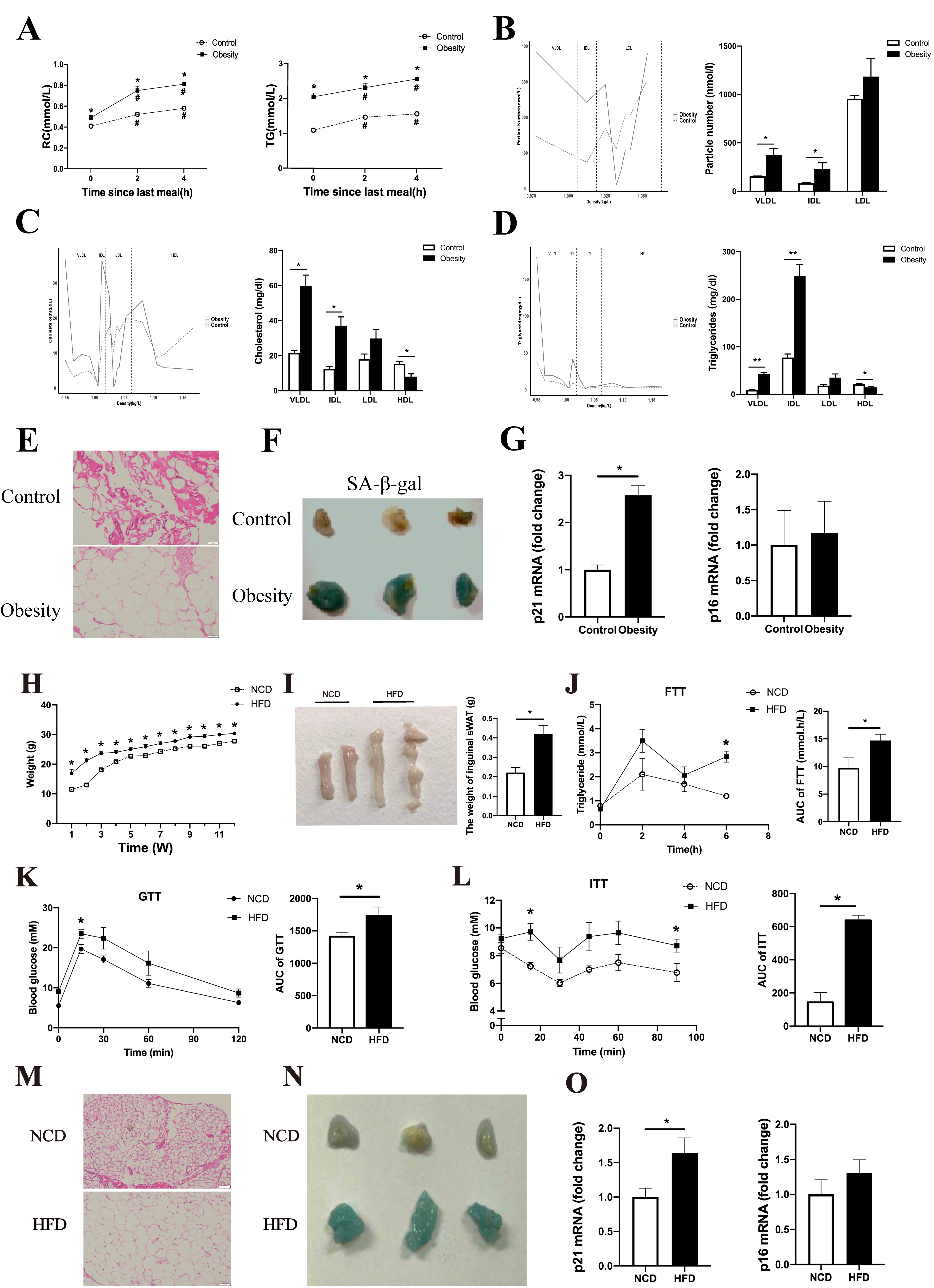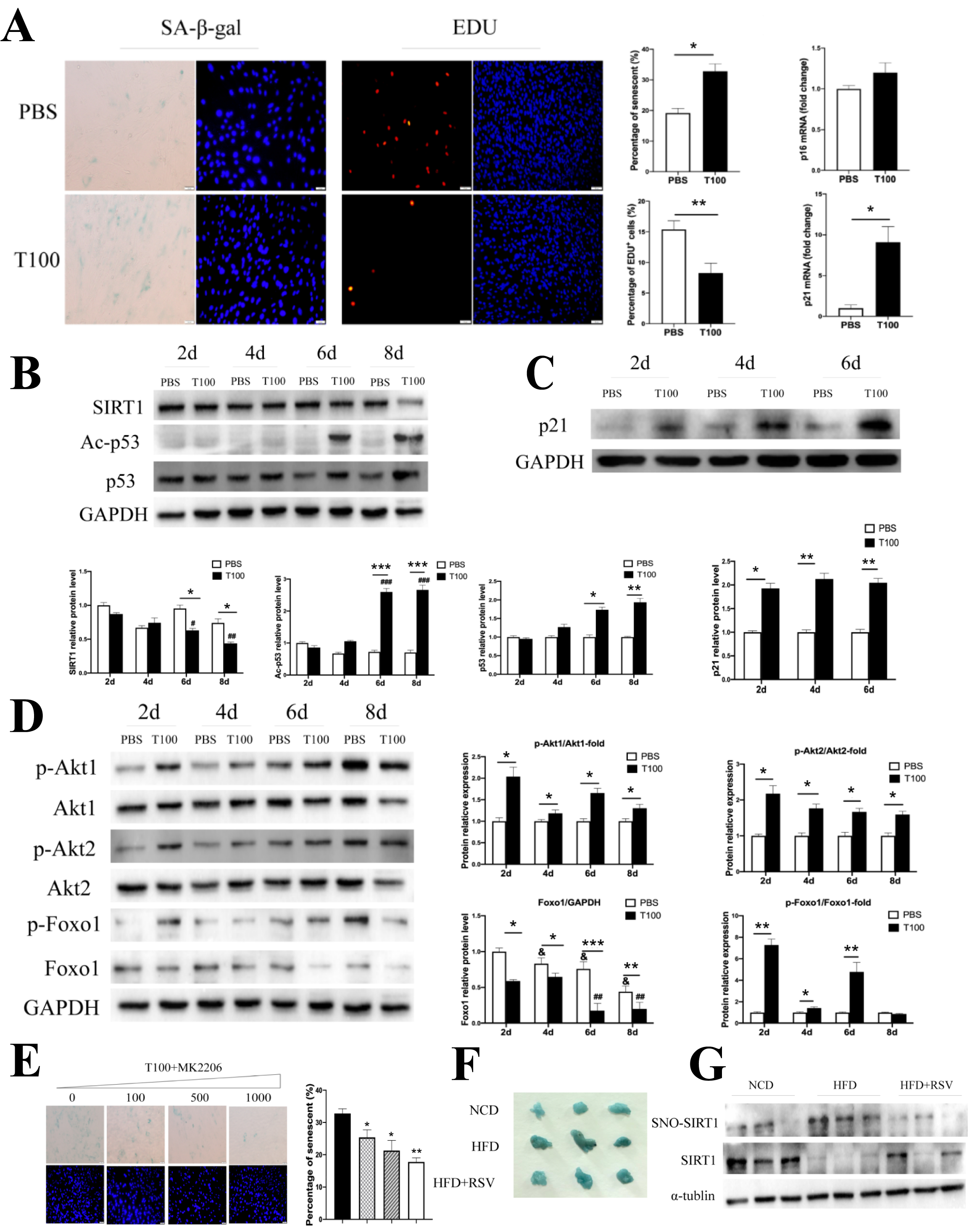Final ID: MDP83
High fat diet induced the premature senescence of white adipose tissue through downregulating SIRT1 expression and promoting its S-nitroslyation modification
Abstract Body (Do not enter title and authors here): Background and Objectives: The dysfunction of subcutaneous white adipose tissue is one of the early manifestations of obesity, which was associated with accelerated cellular process in aging induced by high fat-diet. The premature senescence of adipose-derived mesenchymal stem cells (AMSCs) is the key factor contributing to the aging of subcutaneous white adipose tissue. However, the underlying mechanism was not clear. Here, we explored the role and mechanism of obesity on the aging of white adipose tissue and AMSCs, and evaluated the anti-aging effect of resveratrol on this process.
Methods: Subcutaneous white adipose tissue in non-elderly obese individuals and mice fed with high fat-diet was obtained to detect the TG metabolism and premature senescence. Then the postprandial triglyceride-rich lipoproteins (TRL) after high-fat diet was extracted, and the role and mechanism of TRL on the senescence of AMSCs were explored. Finally, the anti-aging effect of resveratrol on the white adipose tissue and AMSCs was evaluated.
Results: Postprandial TG metabolism was abnormal in non-elderly obese humans and mice, and high-fat diet remarkably aggravated white adipose tissue senescence in mice (Fig. 1). TRL induced the premature senescence of AMSCs, with the downregulation of of silent mating-type information regulation 2 homolog 1 (SIRT1) via protein kinase B/forkhead box protein O1 pathway. Besides, the S-nitrosylation of SIRT1 was increased which was regulated by ten-eleven translocation 1/S-nitrosoglutathione reductase pathway. Resveratrol, a SIRT1 agonist, inhibited the TRL-induced AMSCs senescence, resulting in the amelioration of white adipose tissue senescence in obese mice (Fig. 2).
Conclusions: These findings established a new mechanism for high-fat diet-induced white adipose tissue senescence and provided a potential therapeutic strategy for high-fat diet induced white adipose tissue senescence and metabolic disorders.
Methods: Subcutaneous white adipose tissue in non-elderly obese individuals and mice fed with high fat-diet was obtained to detect the TG metabolism and premature senescence. Then the postprandial triglyceride-rich lipoproteins (TRL) after high-fat diet was extracted, and the role and mechanism of TRL on the senescence of AMSCs were explored. Finally, the anti-aging effect of resveratrol on the white adipose tissue and AMSCs was evaluated.
Results: Postprandial TG metabolism was abnormal in non-elderly obese humans and mice, and high-fat diet remarkably aggravated white adipose tissue senescence in mice (Fig. 1). TRL induced the premature senescence of AMSCs, with the downregulation of of silent mating-type information regulation 2 homolog 1 (SIRT1) via protein kinase B/forkhead box protein O1 pathway. Besides, the S-nitrosylation of SIRT1 was increased which was regulated by ten-eleven translocation 1/S-nitrosoglutathione reductase pathway. Resveratrol, a SIRT1 agonist, inhibited the TRL-induced AMSCs senescence, resulting in the amelioration of white adipose tissue senescence in obese mice (Fig. 2).
Conclusions: These findings established a new mechanism for high-fat diet-induced white adipose tissue senescence and provided a potential therapeutic strategy for high-fat diet induced white adipose tissue senescence and metabolic disorders.
More abstracts on this topic:
Adipocyte-Derived Small Extracellular Vesicles Enriched with NNMT Inhibit Angiogenesis Post-Myocardial Infarction in Diabetes
Ren Hang, Cao Liwen, Zhao Zhenkun, Huang Ying, Pan Zhongjing, Cheng Liangfen, Gan Lu
A Cellular Mechanism Mediating Lipomatous Metaplasia In the Infarcted Heart.Tuleta Izabela, Frangogiannis Nikolaos, Venugopal Harikrishnan, Huang Shuaibo, Humeres Claudio, Hernandez Velasco Silvia, Hanna Anis, Kubota Akihiko, O'leary Kevin, Zheng Deyou


